At Wat Khaek:
“OHM SAKTI OHM, OHM KALI OHM, OHM VEL VEL!”
Devotees’ voices echoed powerfully as the sacred procession of Goddess Mariamman, Kali Goddess, and Lord Kartikeya moved along the designated route.
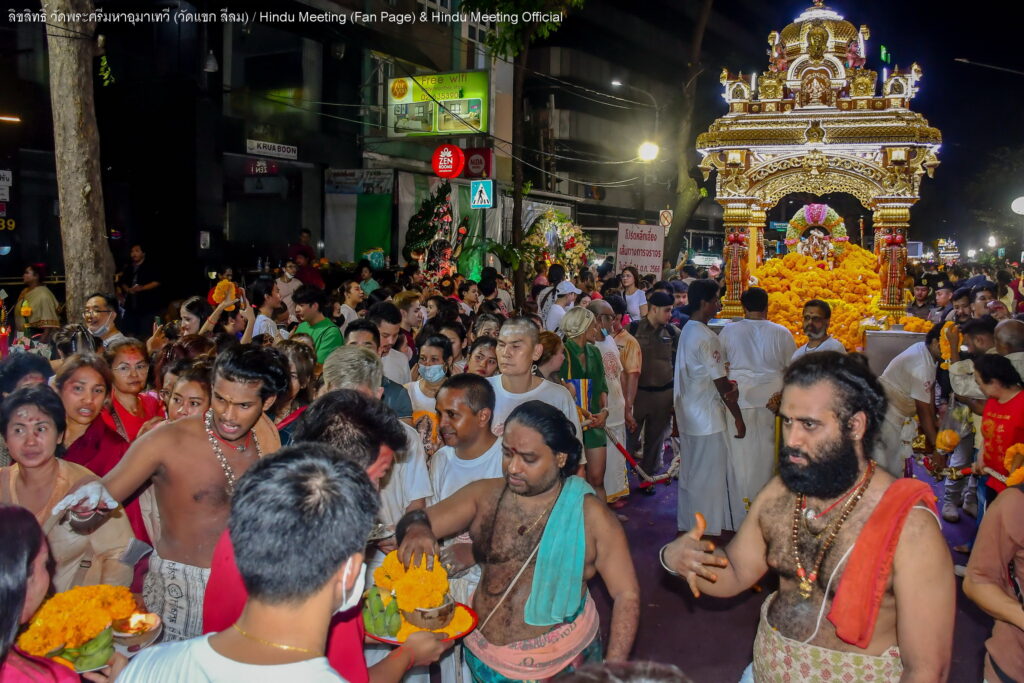

A Glimpse Back in Time:
In 1879, Dravida settlers from India arrived in southern Thailand, eventually finding their way to Bangkok. After King Rama V returned from a trip to India, he asked the Dravida community if they needed anything from their homeland. Their only request was to build a shrine for their deities, and with the king’s blessing, the first wooden shrine was erected at Hua Lamphong, dedicated to Goddess Mariamman, the protector from diseases like smallpox. Later, the shrine was relocated to Silom Road. The current site of Wat Khaek was once a vegetable garden, which was exchanged by locals for land to build the temple, officially registered as the Sri Maha Mariamman Temple Foundation in 1911. Since then, it has been a spiritual and cultural center for the South Indian Hindu community.
The annual procession honoring the goddess has been a beloved tradition since the time of King Rama V, with a few interruptions during major events like World War II and the COVID-19 pandemic.
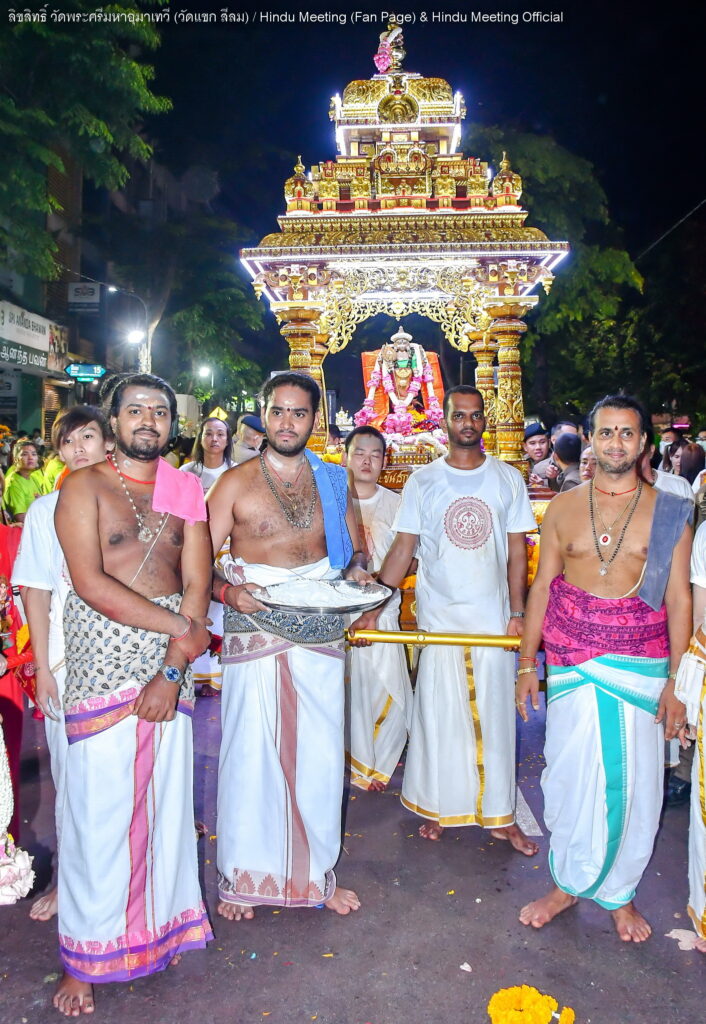
Navratri 2024 is Here!
Though the festival has already begun, the excitement is far from over. This year’s Navratri, running from October 3–11, began with rituals honoring Lord Ganesha, local deities, and planetary gods. A special highlight is the procession of Goddess Chulankali, which happens just once a year around the temple. The grand celebration on October 12, known as “Vijayadashami” or “Dussehra,” will feature five chariots representing various deities—Lord Ganesha, Lord Kartikeya, Lord Krishna, Lord Kathavarayan, and the Tri Shakti Goddesses (Uma Devi, Lakshmi Devi, Saraswati Devi)—followed by horse-mounted figures of Goddess Mariamman, Kali Goddess, and Lord Kartikeya. The festival concludes on October 14 with the ceremonial lowering of the lion flag and the ritual cleansing of the mediums for the gods.

Goddess Mariamman: A True Embodiment of Feminine Power!
Navratri, also known as “Durga Puja,” honors the nine forms of the Navadurga goddesses, including Shailputri, Brahmacharini, Chandraghanta, Kushmanda, Skandamata, Katyayani, Kaalratri, Mahagauri, and Siddhidatri. Different regions may worship slightly different forms, but at Wat Khaek on Silom, the nine days are divided between the “Three Shakti Goddesses”: three days for Goddess Durga, three for Goddess Lakshmi, two for Goddess Uma-Siva, and one for Goddess Saraswati.
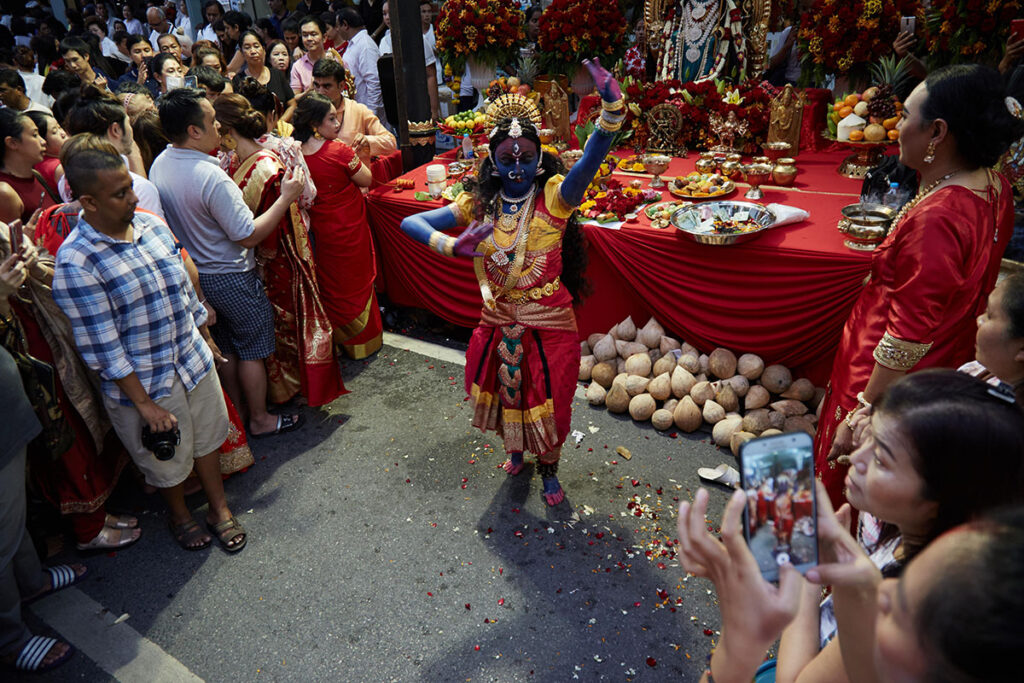
Goddess Mariamman and Lord Kartikeya are deeply rooted in South Indian traditions, where deities are often viewed in dual aspects—both nurturing and fierce, like Bhairava and Bhairavi. South India’s cultural practices also include deity possession, something not commonly found in the north. Goddess Mariamman, in particular, is a symbol of women’s identity and strength, especially cherished by the LGBTQ+ community. Every year, devotees construct elaborate, beautifully adorned shrines in her honor, turning the temple grounds into a breathtaking spectacle.


During the festival, the air is thick with the sweet smell of incense, burning candles, and camphor offered in fire rituals, or Arti. Each shrine is an artistic display of devotion, often accompanied by traditional Indian dance performances. Some devotees even dress as gods, offering blessings to those who seek them.
One of the most important rituals is the “Coconut Breaking,” where devotees smash ripe coconuts on the ground to symbolize the breaking of ego and the cleansing of the path for worshippers.
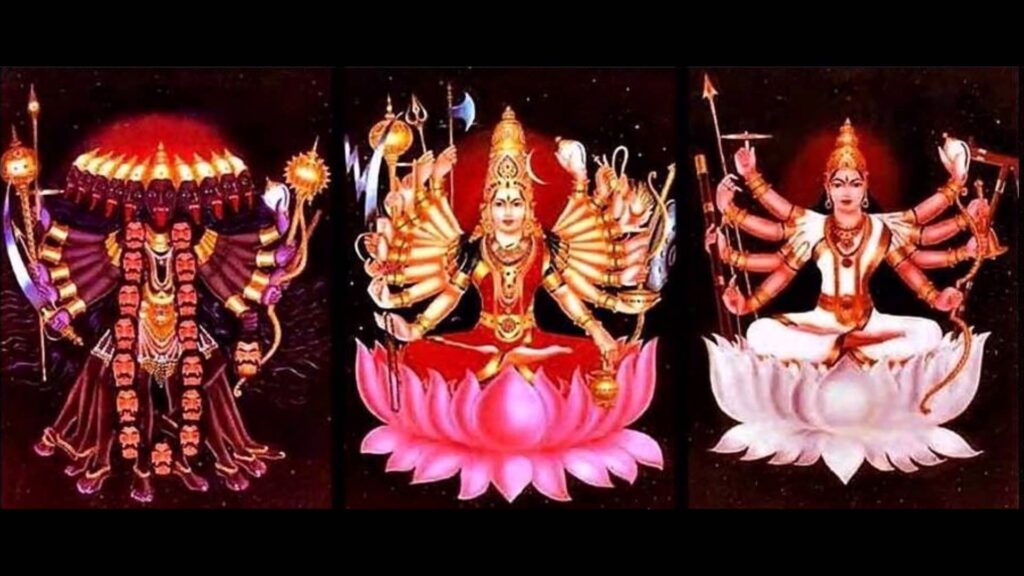
Aside from Pride Month in June, Navratri is a key moment for the LGBTQ+ community to fully embrace their identity. Dressed in their finest saris, kurtas, and dhotis, they walk proudly down Silom Road, celebrating who they are without hesitation. The goddess, after all, represents the dignity and equality of all beings, regardless of gender or identity.








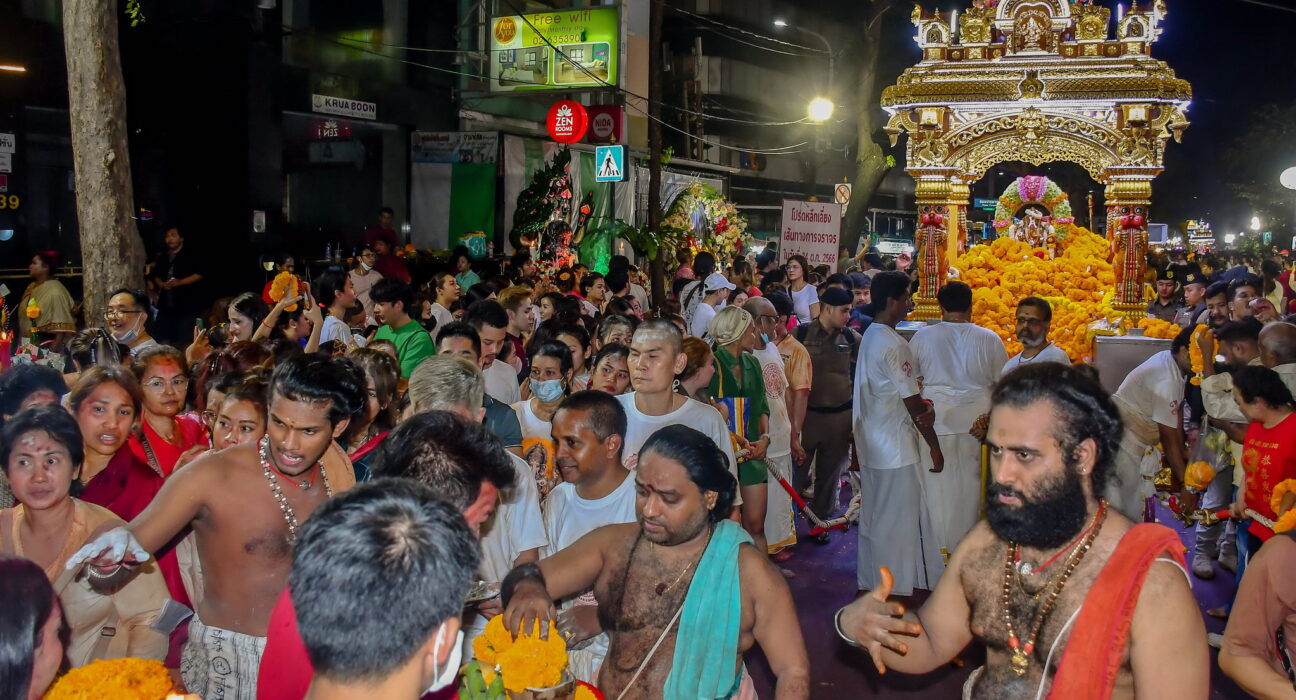
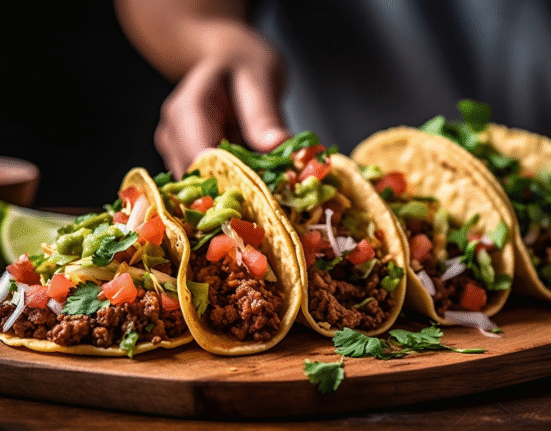






Leave feedback about this